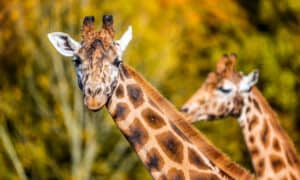What sounds does a giraffe make?
Although they have a reputation for being quiet, giraffes are capable of making noise. Some of their sounds are casual, like the occasional snort or moan. While other sounds are reserved for special situations, like calling their calves home.
In this article, we’ll be exploring all of the different sounds giraffes can make, even the ones you can’t detect with human ears! So, follow along. By the time you’re done reading, you’ll be an expert on all of the silly and strange sounds a giraffe makes.
1. Snort
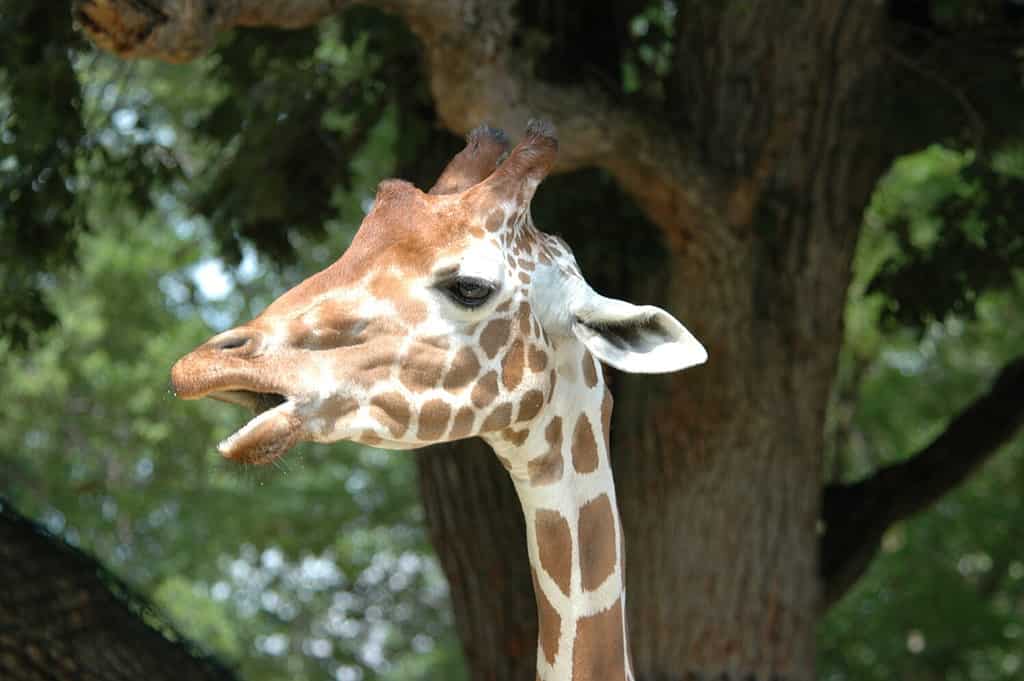
Sometimes giraffe snorts are singular, other times they’re part of a half-hour vocalization.
©Bull's-Eye Visual Arts/Shutterstock.com
Giraffes snort by blowing air through their nostrils. The snorts are a way for these magnificent creatures to communicate with one another. Sometimes snorts are singular, other times they’re part of a half-hour vocalization.
One researcher heard a group of giraffes snorting, from only a few meters away. Seven giraffes happily snorting and chewing on leaves changed their demeanor when they picked up the human scent. The laidback snorts then became irritated hisses, accompanied by neck shaking.
2. Hiss
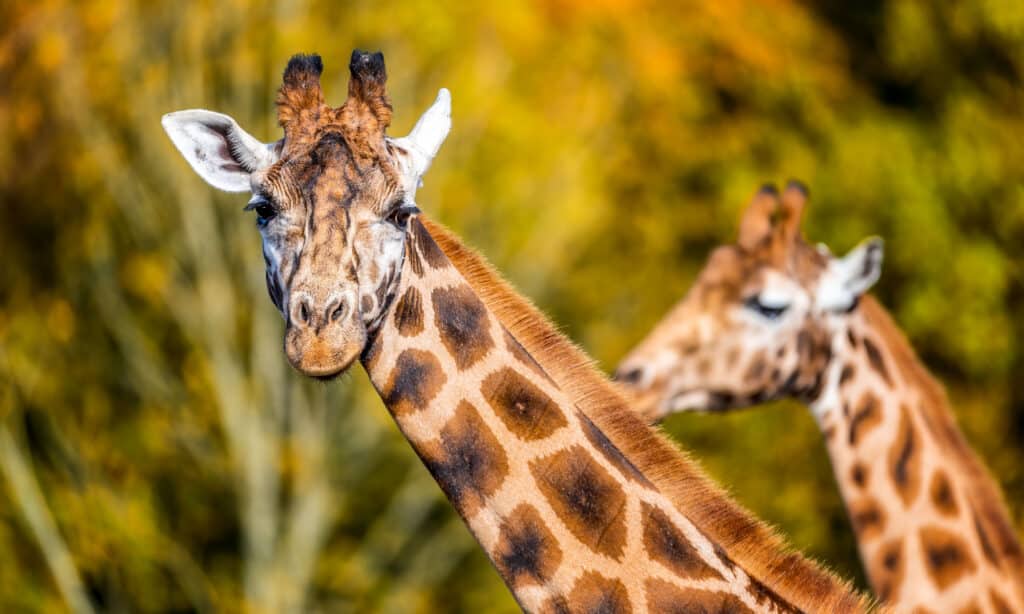
A giraffe’s hiss sounds similar to the defensive hissing sounds of a musk deer.
©Jane Rix/Shutterstock.com
If they feel threatened a giraffe will let out a short hiss. The hiss sounds similar to the defensive hissing sounds of a musk deer. Similar to giraffes, musk deer are generally quiet creatures. But that all changes if a threat appears. An alarmed musk deer can hiss, and even scream.
Giraffes might not be able to scream like a musk deer, but they can make themselves more intimidating with the help of body language. It’s common for a hissing giraffe to shake their long neck at whatever it is that’s threatening them. And sometimes adults will hiss at their young when they get out of line.
3. Bellow

Mother giraffes will emit a loud low bellow when they’re searching for their offspring.
©iStock.com/Jonathan Ross
Like many animals, giraffes have a special way of communicating with their young. Mother giraffes will emit a loud low bellow when they’re searching for their offspring. These low-frequency vocalizations can carry long distances.
4. Bleat

Giraffes can make a weak bleating sound, it’s most commonly heard among calves.
©Nicola_K_photos/Shutterstock.com
Baby giraffes will bleat when they’re hungry. It’s a whiny sort of sound. The high-pitched vocalization is similar to the sound a goat of lamb might make. Elk calves are another animal that’s known to bleat for attention.
5. Moo

Sometimes baby giraffes, or calves, will moo to their mothers as a cry for help.
©iStock.com/miroslav_1
Although rare, young giraffes can emit a low moo sound. However, it’s not the powerful moo you’d expect from a cow. Instead, this sound is a much lower frequency, and less intense. Here you can listen to a baby giraffe mooing to its mother, it’s adorable!
6. Cough
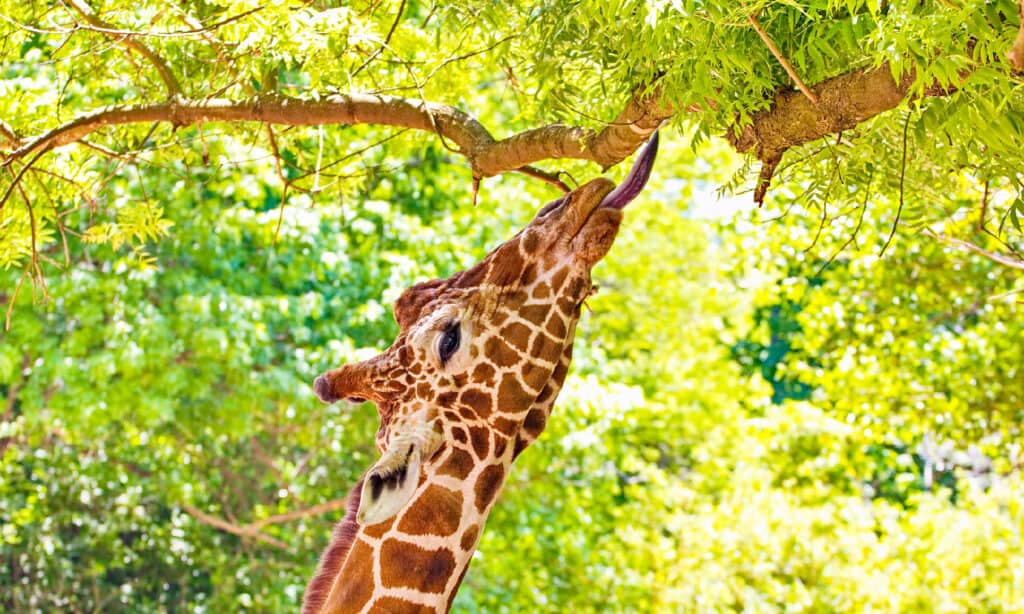
Giraffes are capable of making a “burst” sound that resembles a cough.
©iStock.com/Simplyphotos
Did you know giraffes can cough? It’s not the same type of cough you might make when clearing your throat. Instead, it’s more of a “puff”, sound, and it doesn’t help clear their throat of any obstructions. This vocalization is usually accompanied by other sounds such as a moan.
7. Whistle

Giraffes are capable of making a non-melodic whistling sound that sometimes resembles a flute.
©iStock.com/slowmotiongli
Can you imagine going on a safari and seeing a whistling giraffe? Although it’s not a musical whistle like you or I could produce, giraffes do have the ability to produce a high-pitched whistle whine. Some reference the sound as flute-like.
8. Hum
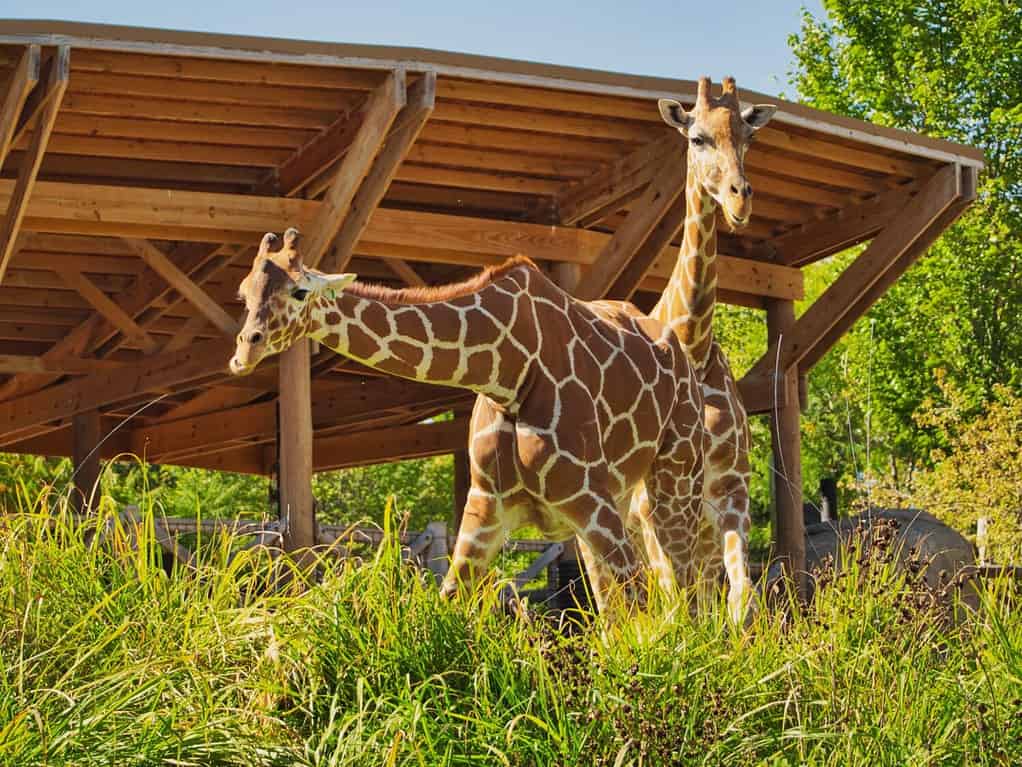
One of the most peculiar sounds a giraffe can make is their nightly hum.
©Wirestock Creators/Shutterstock.com
As the day turns into night, giraffes gather to rest and sometimes hum. Yes, that’s right, giraffes can hum! The harmonic vocalization is thought to be a way for them to communicate with one another. When you go to bed tonight, remember, somewhere a giraffe is humming a family member to sleep. You can hear the impressive sound for yourself in the clips from this research video.
9. Grunt
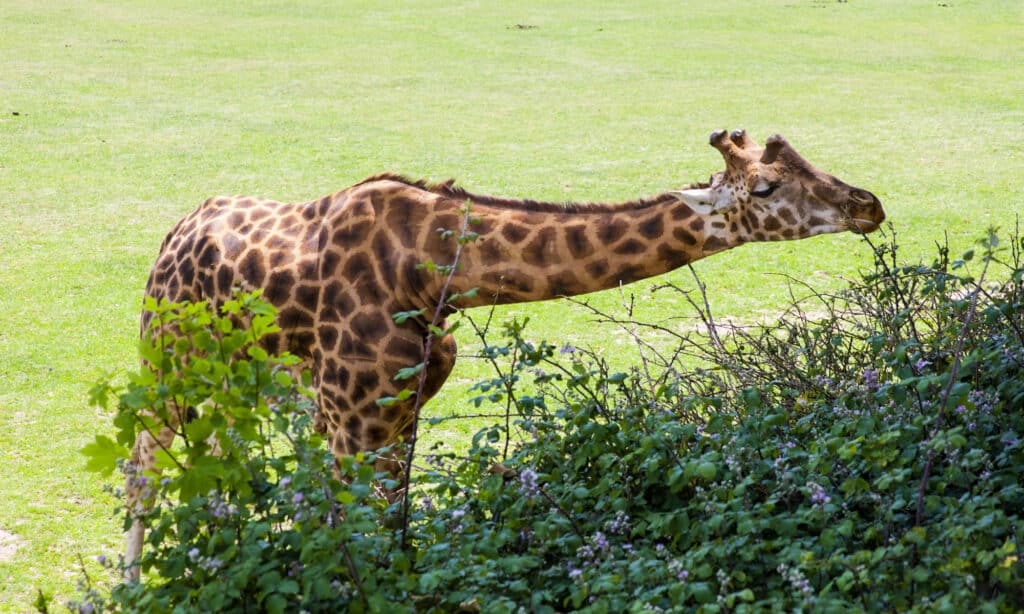
When a giraffe senses danger they may begin to grunt, hiss, and groan.
©riekephotos/Shutterstock.com
Another sound a giraffe can make is a distinct grunting noise. Like many giraffe sounds, this vocalization isn’t a common one. Instead, grunts are reserved for extreme situations. If a giraffe senses a threat they may begin to grunt, groan, and hiss.
10. Sneeze

If you’re ever up close to a giraffe, watch out, they just might sneeze on you.
©Thomas Barrat/Shutterstock.com
Achoo! Sneezing is another one of the sounds giraffes make. It’s not uncommon for a loud sneeze to be accompanied by a grunt, snort, and or burp! Be careful if you’re close by. A giraffe sneeze is often wet and can carry a long distance. This woman learned that lesson the hard way when a giraffe sneezed on her baby.
How a Giraffes Vocal Cords Work
Similar to us humans, giraffes have a voice box or larynx. Within the larynx there are vocal cords, however, these vocal cords function differently you’d suspect. The vocal cord muscles aren’t able to produce as many sounds as other animals, and part of this has to do with limited lung capacity.
Along with low lung capacity, giraffes also have a small and narrow trachea. Because of this, there isn’t very much air flowing over the vocal cords. Without sufficient air, the cords can’t vibrate in the same manner as other animals, including humans. This is why giraffes are mostly silent, except for the occasional snort, hiss, or weak bleat. Instead of making loud noises, giraffes use a lot of infrasonic sounds.
What Are Infrasonic Sounds?
Did you know that giraffes make infrasonic sounds? Our human ears are incapable of picking up on these vocalizations. Instead, the low-frequency grunts and moans are just meant for other giraffes to hear.
A study took place in two zoos, one in North Carolina, and the other in South Carolina. Using a portable recording system, researchers set out to record the sounds giraffes make. Their efforts were able to reveal that giraffes make two types of sounds.
First, is the sound humans can hear. The majority of the audible sounds were within 150 to 200 Hz. Then there’s the infrasounds, the ones we humans can’t detect. The infrasounds typically fall within 20 to 40 Hz.
While making infrasonic sounds, it was common for researchers to observe a “neck throw”. This is where the giraffes shake their neck, which may also help with producing the vocalizations. Many suspect infrasound are away for giraffes to secretly communicate among the herd.
The photo featured at the top of this post is © Bull's-Eye Visual Arts/Shutterstock.com
Thank you for reading! Have some feedback for us? Contact the AZ Animals editorial team.





